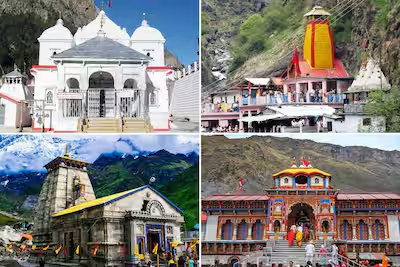
Char Dham: A Comprehensive Guide to the Sacred Pilgrimage
The Char Dham Yatra, comprising Yamunotri, Gangotri, Kedarnath, and Badrinath, is a revered pilgrimage circuit in Hinduism, nestled in the majestic Himalayas. Each site holds immense spiritual significance and draws millions of devotees seeking divine blessings.
Yamunotri, the starting point, is the source of the Yamuna River, believed to cleanse sins and offer spiritual rejuvenation. Gangotri, the second stop, is the origin of the Ganges River, revered for its purifying powers and divine grace. Kedarnath, dedicated to Lord Shiva, is located at a high altitude and represents a challenging yet rewarding journey for spiritual seekers. Badrinath, the final destination, is dedicated to Lord Vishnu and is famed for its serene surroundings and spiritual aura.
Embarking on the Char Dham Yatra involves navigating rugged terrains and high altitudes, but the spiritual rewards are profound. The pilgrimage is typically undertaken between May and November, avoiding extreme weather conditions. Each site offers unique religious experiences, making the Char Dham Yatra a deeply enriching spiritual journey.

1. Yamunotri: The Source of the Yamuna River
Yamunotri, situated at an altitude of 3,293 meters in the Garhwal Himalayas, is a sacred pilgrimage site dedicated to the Yamuna River, one of the most revered rivers in Hinduism. It marks the source of the Yamuna, which is a major tributary of the Ganges and holds immense religious significance.
The Yamunotri Temple is dedicated to Goddess Yamuna and is the focal point of this holy site. According to Hindu mythology, the river is considered the daughter of the Sun God, Surya, and the sister of Yama, the God of Death. Pilgrims believe that a dip in the river’s sacred waters can purify the soul and bring divine blessings.
The temple itself was constructed by Maharani Gularia of Jaipur in the 19th century and stands on a rugged terrain surrounded by stunning natural beauty. The approach to Yamunotri involves a trek through picturesque landscapes, which adds to the spiritual experience of the pilgrimage.
Yamunotri offers a serene environment amidst the towering peaks and lush forests, providing a tranquil and spiritually enriching experience for those seeking to connect with the divine.
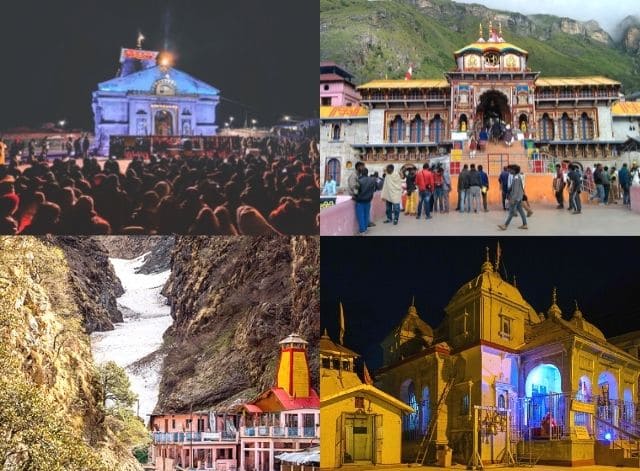
Significance
Yamunotri, the source of the Yamuna River, holds immense spiritual and religious significance in Hinduism. It is believed that Goddess Yamuna, a revered deity and daughter of the Sun God, Surya, resides here. The sacred river is considered a purifier of sins, and a dip in its waters is believed to absolve devotees of their past transgressions.
According to legend, the river was brought to Earth by the penance of King Bhagirath, making Yamunotri a vital site for spiritual purification and devotion. The Yamunotri Temple, which enshrines the goddess, draws thousands of pilgrims each year who seek her blessings and wish to experience the divine ambiance of this high-altitude pilgrimage site. The scenic beauty surrounding the temple further enhances its spiritual allure, making Yamunotri a cherished destination for seekers of spiritual solace.
Travel and Accessibility
Yamunotri, the sacred source of the Yamuna River, is accessible via a trek from Janki Chatti, located about 14 kilometers from the shrine. The trek to Yamunotri involves a steady uphill climb through scenic terrain, which can be covered on foot or with the help of ponies and palanquins for those who need assistance.
The journey to Janki Chatti is usually done by road from major towns like Rishikesh or Dehradun, with the last stretch involving a bumpy ride. Travelers should prepare for the high altitude and varying weather conditions to ensure a smooth pilgrimage.

2. Gangotri: The Source of the Ganges River
Gangotri, located at an elevation of 3,048 meters in the Garhwal Himalayas, is a sacred destination and the source of the Ganges River, one of the holiest rivers in Hinduism. This revered spot is situated on the banks of the Bhagirathi River, a tributary of the Ganges, and is a key site in the Char Dham Yatra.
The Gangotri Temple is dedicated to Goddess Ganga, who is believed to have descended from the heavens to cleanse the Earth of sins. According to legend, King Bhagirath prayed fervently to bring the river down from the heavens to purify the souls of his ancestors. The temple, constructed in the 18th century by the Gorkha General Amar Singh Thapa, stands as a testament to this divine event.
Devotees visit Gangotri to seek blessings, perform rituals, and immerse themselves in the sacred waters believed to have the power to absolve sins. The surrounding landscapes, characterized by stunning views of snow-capped peaks and lush valleys, add to the spiritual ambiance of the site.
Gangotri continues to attract pilgrims from all over the world, offering a profound connection to the divine and a serene escape into nature’s beauty.

Significance
Gangotri is profoundly significant in Hinduism as the sacred origin of the Ganges River, one of the holiest rivers in the religion. According to ancient scriptures, Goddess Ganga descended from the heavens to Earth to cleanse the souls of the descendants of King Bhagirath, who performed intense penance to bring her down.
The Gangotri Temple, dedicated to Goddess Ganga, is a vital pilgrimage site where devotees come to seek divine blessings and spiritual purification. The river’s waters are believed to have the power to absolve sins and grant liberation from the cycle of rebirth. Pilgrims and devotees flock to Gangotri not only for its religious significance but also for its breathtaking natural beauty, which enhances the spiritual experience. The high-altitude temple offers a serene environment that fosters deep devotion and reflection, making Gangotri a revered destination for those on a spiritual journey.
Travel and Accessibility
Gangotri is accessible by road from Uttarkashi, with a scenic drive of approximately 100 kilometers through the Garhwal Himalayas. The route is well-maintained but can be winding and narrow, so caution is advised. From Uttarkashi, travelers can hire taxis or take shared cabs.
The final stretch to the Gangotri Temple involves a short walk from the parking area. The best time to visit is between May and November, avoiding heavy snowfall or rain. Ensuring proper travel arrangements and checking weather conditions in advance can help make the journey to Gangotri a smoother experience.
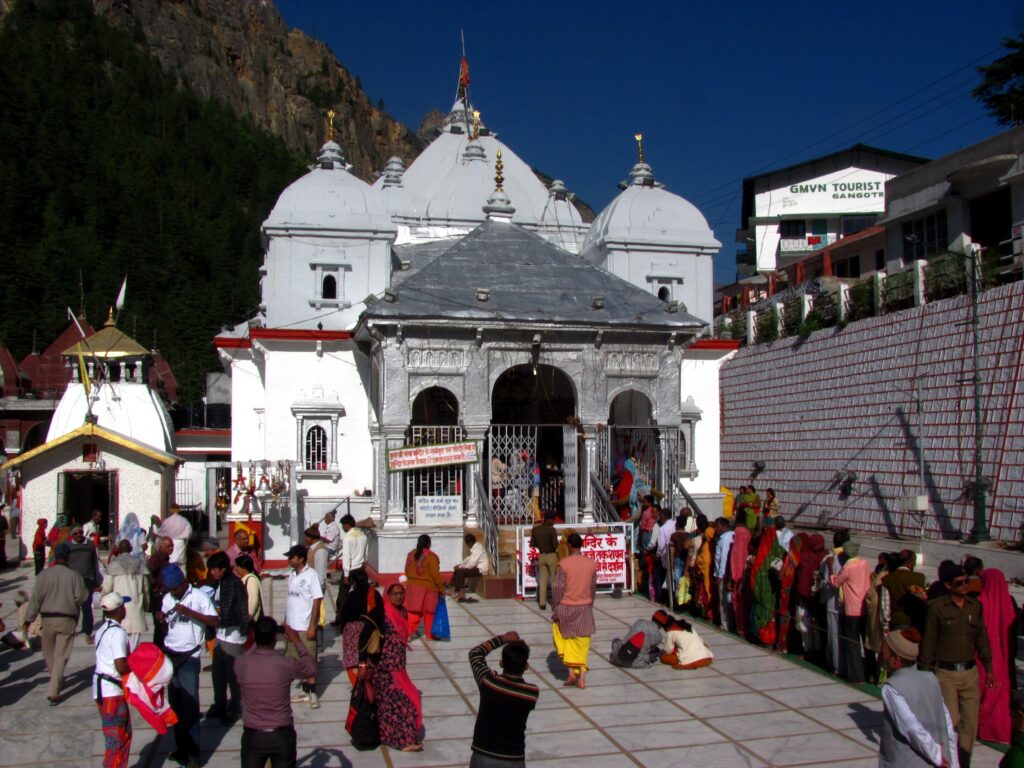
3. Kedarnath: The Abode of Lord Shiva
Perched high in the Himalayas at an altitude of 3,583 meters, Kedarnath is a sacred site dedicated to Lord Shiva, one of the principal deities in Hinduism. This revered temple, situated on the banks of the Mandakini River, is a major destination for devotees undertaking the Char Dham Yatra.
The Kedarnath Temple is one of the twelve Jyotirlingas, which represent the divine presence of Lord Shiva. According to legend, the temple was established by the Pandavas, heroes of the Mahabharata, who sought Lord Shiva’s blessings to atone for their sins. The present temple structure, though rebuilt by Adi Shankaracharya in the 8th century, stands on the site of earlier temples believed to be destroyed by natural calamities.
Reaching Kedarnath involves a strenuous trek through rugged terrain, which adds to the spiritual significance of the pilgrimage. Despite its challenging accessibility, the temple’s spiritual aura and the breathtaking Himalayan backdrop make the journey profoundly rewarding. The serene environment and the temple’s divine ambiance provide solace and a deep connection with Lord Shiva.
Kedarnath remains a symbol of faith and endurance, offering devotees a unique spiritual experience amidst the majestic Himalayas.
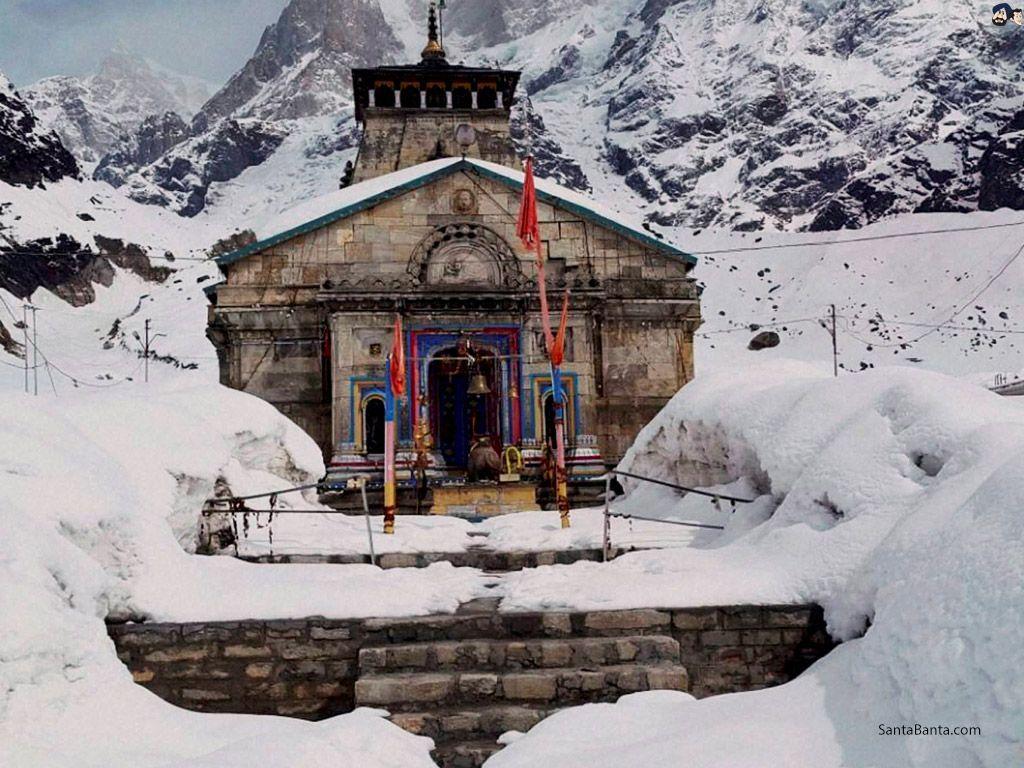
Significance
Kedarnath is a deeply revered pilgrimage site in Hinduism, dedicated to Lord Shiva, one of the principal deities. Situated at a high altitude in the Himalayas, it is one of the twelve Jyotirlingas, which are considered the most sacred representations of Shiva. According to legend, the Kedarnath Temple was established by the Pandavas, who sought Shiva’s blessings to atone for their sins after the Kurukshetra War.
The temple’s remote location and challenging trek add to its spiritual significance, symbolizing the arduous path to divine grace. The serene environment, surrounded by snow-capped peaks, enhances the spiritual experience, making it a place of deep meditation and devotion. Pilgrims believe that visiting Kedarnath and offering prayers here can bring them closer to salvation and divine favor, reinforcing its importance in the Hindu spiritual journey.
Travel and Accessibility
Kedarnath is accessible primarily through a challenging trek of approximately 16 kilometers from Gaurikund, which is the nearest roadhead. The trek, set amidst rugged terrain and high altitude, requires a good level of physical fitness and acclimatization. For a quicker option, helicopter services are available from Phata, Sirsi, and Kedarnath itself, though they can be costly and are subject to weather conditions.
The journey to Gaurikund is usually done by road from major towns like Rishikesh or Dehradun. Travelers should be prepared for changing weather and altitude-related issues to ensure a smooth pilgrimage.
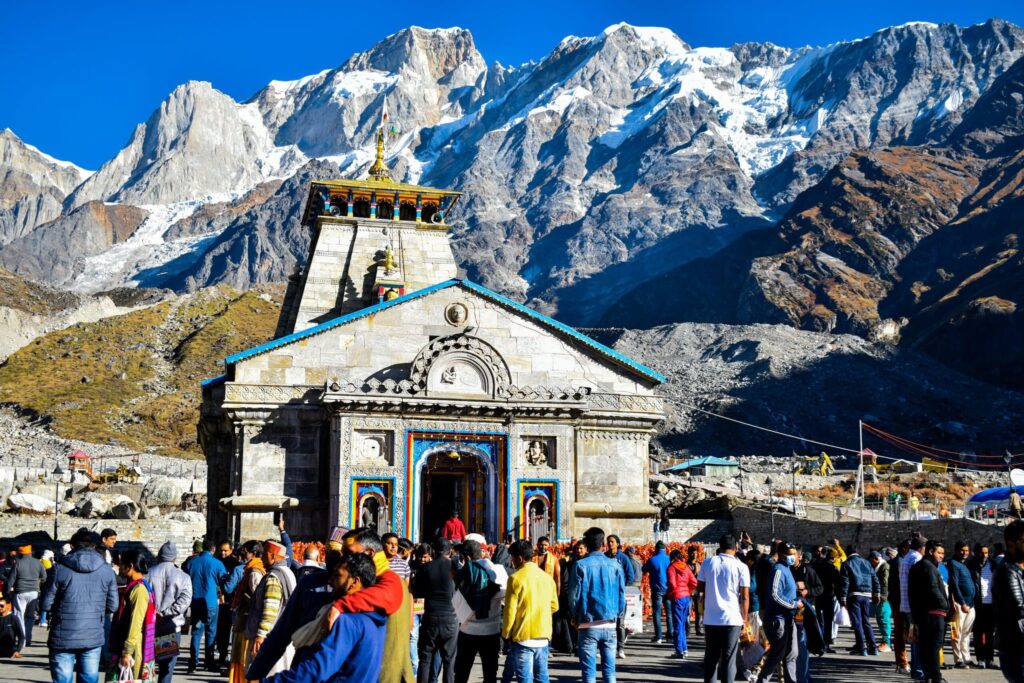
4. Badrinath: The Abode of Lord Vishnu
Nestled in the serene Himalayas, Badrinath is one of the most revered pilgrimage sites in India, dedicated to Lord Vishnu. This sacred town, situated at an altitude of 3,133 meters on the banks of the Alaknanda River, attracts thousands of devotees annually who seek divine blessings and spiritual solace.
The Badrinath Temple is the focal point of this pilgrimage, renowned for its spiritual significance and scenic beauty. According to legend, Lord Vishnu meditated here in the form of a deity, and the temple is believed to be where he chose to reside. The present structure, dating back to the 19th century, was built by the King of Jaipur, though references to the shrine date back to ancient Hindu scriptures.
Devotees visit Badrinath not only to seek the blessings of Lord Vishnu but also to witness the awe-inspiring natural beauty that surrounds the temple. The temple’s location amidst the towering peaks of the Himalayas adds to its divine ambiance. Pilgrims often undertake a challenging trek to reach Badrinath, which enhances their spiritual journey.
Badrinath remains a beacon of faith and devotion, offering both spiritual enrichment and breathtaking views of the Himalayas.
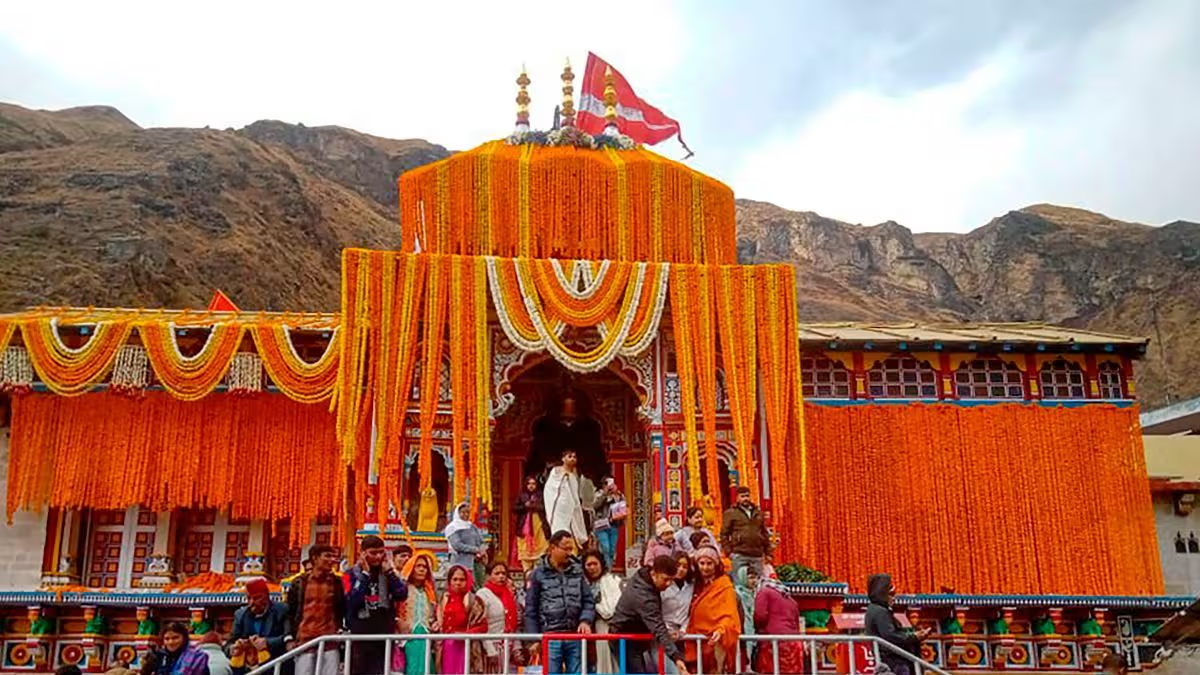
Significance
Badrinath is one of the most revered pilgrimage sites in Hinduism, dedicated to Lord Vishnu, who is worshipped here as Badrinarayan. Located at an altitude of 3,133 meters in the Himalayas, this sacred temple is part of the Char Dham Yatra and holds immense spiritual significance. According to Hindu legend, Lord Vishnu meditated here under a Badri tree, which is why the site is named Badrinath.
The temple is believed to be the place where Vishnu appeared in his most accessible form, offering blessings and salvation to devotees. The breathtaking surroundings, with snow-clad peaks and the Alaknanda River flowing nearby, create a divine atmosphere that enhances the pilgrimage experience. Visiting Badrinath is considered a path to attaining moksha (liberation) and securing divine grace, making it a crucial destination for spiritual seekers.
Travel and Accessibility
Badrinath, situated at 3,133 meters in the Himalayas, is accessible by well-maintained roads from Joshimath. The drive to Badrinath offers breathtaking views of the surrounding mountains and is relatively comfortable compared to other Char Dham destinations.
The route is typically traveled by private or shared taxis, which are available from major towns like Rishikesh and Haridwar. During the peak pilgrimage season, road conditions can be busy, so it’s advisable to plan your trip in advance. Accessible year-round, except during extreme weather, Badrinath’s location ensures a spiritual retreat with scenic beauty.
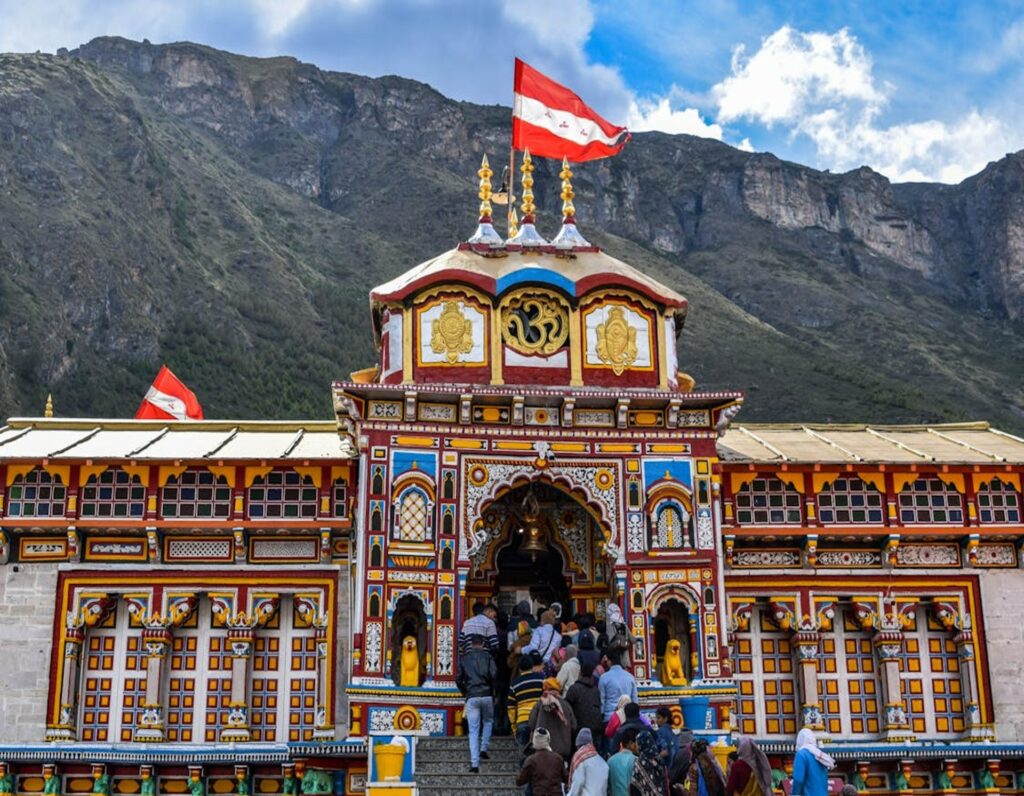
Practical Tips for the Char Dham Yatra
Embarking on the Char Dham Yatra is a profound spiritual journey, but preparation is key to ensuring a smooth and fulfilling experience. Here are some practical tips to help you navigate this sacred pilgrimage:
1. Plan Your Itinerary Carefully
The Char Dham Yatra includes Yamunotri, Gangotri, Kedarnath, and Badrinath. It is advisable to plan your trip between May and November, avoiding the extreme weather conditions of winter and monsoon. Allocate sufficient time for each destination to fully absorb the spiritual and scenic beauty.
2. Acclimatize to High Altitudes
The pilgrimage involves high-altitude trekking, especially to Kedarnath and Badrinath. To prevent altitude sickness, acclimatize gradually. Spend a day or two at a moderate altitude before heading to higher elevations. Stay hydrated and avoid heavy meals.
3. Pack Wisely
Pack lightweight, weather-appropriate clothing. Include thermal wear, rain gear, sturdy trekking shoes, and personal medications. Remember essentials such as sunscreen, a hat, sunglasses, and a first-aid kit. Portable oxygen cylinders may be useful for high-altitude regions.
4. Travel Insurance
Opt for travel insurance that covers high-altitude trekking and medical emergencies. This provides peace of mind in case of unexpected health issues or travel disruptions.
5. Stay Hydrated and Eat Light
Maintaining hydration is crucial in the high-altitude environment. Drink plenty of water and consume light, easily digestible foods to prevent digestive issues.
6. Follow Local Guidelines
Respect local customs and religious practices. Follow guidelines provided by local authorities and temple officials to ensure a respectful and safe pilgrimage.
7. Book Accommodations in Advance
During peak seasons, accommodations can be scarce. Book your stay in advance at each destination to avoid last-minute hassles.
By following these practical tips, you can enhance your Char Dham Yatra experience, ensuring a safe and spiritually rewarding journey through these sacred sites.

History of Char Dham: The Sacred Pilgrimage of the Himalayas
The Char Dham Yatra, comprising Yamunotri, Gangotri, Kedarnath, and Badrinath, is a revered pilgrimage circuit in the Himalayas, established by the great sage Adi Shankaracharya in the 8th century. Shankaracharya, a prominent philosopher, aimed to guide devotees towards spiritual enlightenment and moksha (liberation) through these sacred sites.
Yamunotri, the starting point, honors the Yamuna River and is linked to the purification of the soul. The shrine was built by Maharani Gularia of Jaipur in the 19th century. Gangotri, the second destination, is the origin of the Ganges River, believed to have descended from the heavens to cleanse humanity’s sins. The temple here was constructed by Gorkha General Amar Singh Thapa.
Kedarnath, dedicated to Lord Shiva, is one of the twelve Jyotirlingas and is closely associated with the Pandavas from the Mahabharata. The temple was rebuilt by Shankaracharya after earlier structures were destroyed. Finally, Badrinath is dedicated to Lord Vishnu and is believed to be where Vishnu meditated. The current temple was built by the King of Jaipur in the 19th century, though its roots trace back to ancient times.
The Char Dham Yatra continues to be a profound spiritual journey, blending divine significance with historical depth.
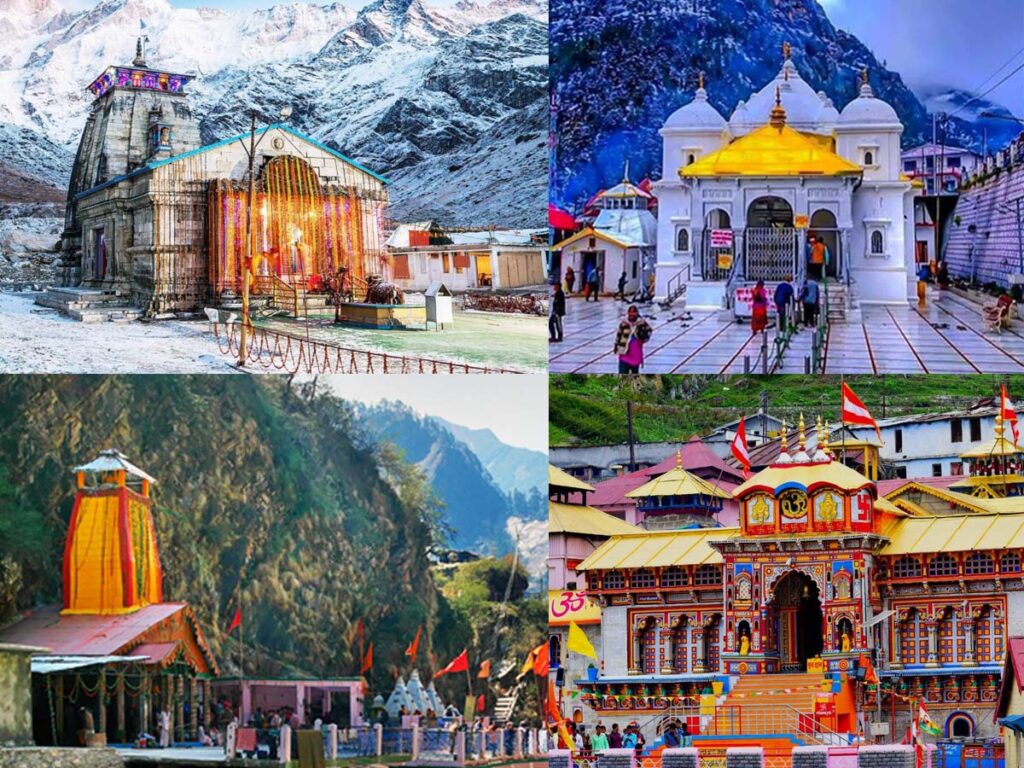
Origins and Significance
The Char Dham pilgrimage is believed to have been established by the great sage Adi Shankaracharya in the 8th century. Shankaracharya, a revered philosopher and theologian, is credited with revitalizing Hinduism and spreading the doctrine of Advaita Vedanta. His establishment of the Char Dham circuit aimed to provide a path for devotees to achieve moksha (liberation) through devotion and penance.
The Char Dham pilgrimage, comprising Yamunotri, Gangotri, Kedarnath, and Badrinath, holds profound spiritual significance in Hinduism. Established by the revered sage Adi Shankaracharya in the 8th century, this sacred circuit was designed to offer devotees a pathway to moksha (liberation) and spiritual enlightenment.

Conclusion
The Char Dham Yatra is more than just a pilgrimage; it is a journey of profound spiritual significance. Visiting Yamunotri, Gangotri, Kedarnath, and Badrinath offers devotees an opportunity to connect with the divine, seek spiritual enlightenment, and experience the majestic beauty of the Himalayas. Each site holds unique religious and historical importance, making the Char Dham Yatra a comprehensive spiritual journey.
Embarking on this pilgrimage is a commitment to both physical endurance and spiritual devotion, symbolizing the pursuit of divine blessings and the quest for inner peace. Whether undertaken traditionally or with modern conveniences, the Char Dham Yatra remains a deeply enriching experience that resonates with countless devotees seeking spiritual fulfillment.








Leave a Reply